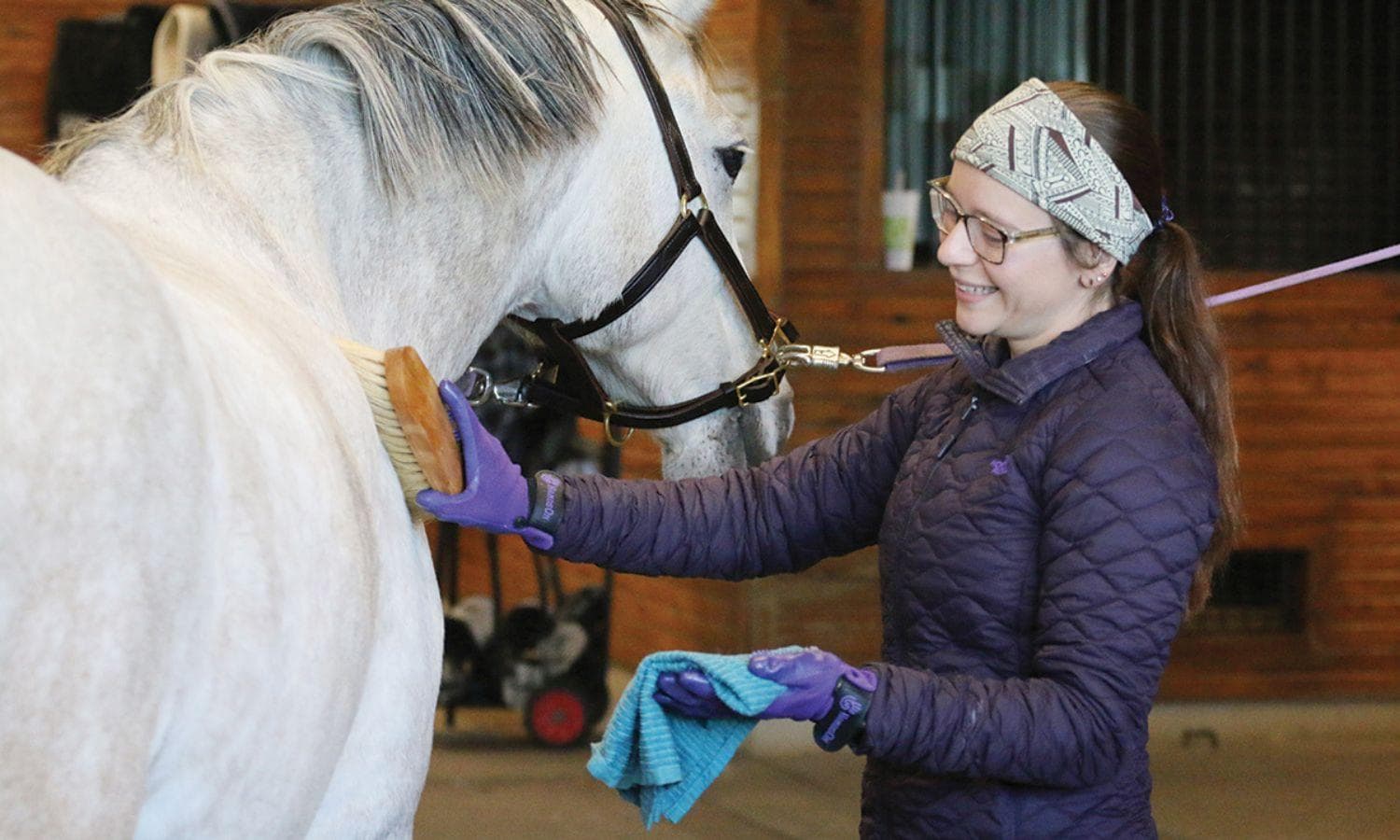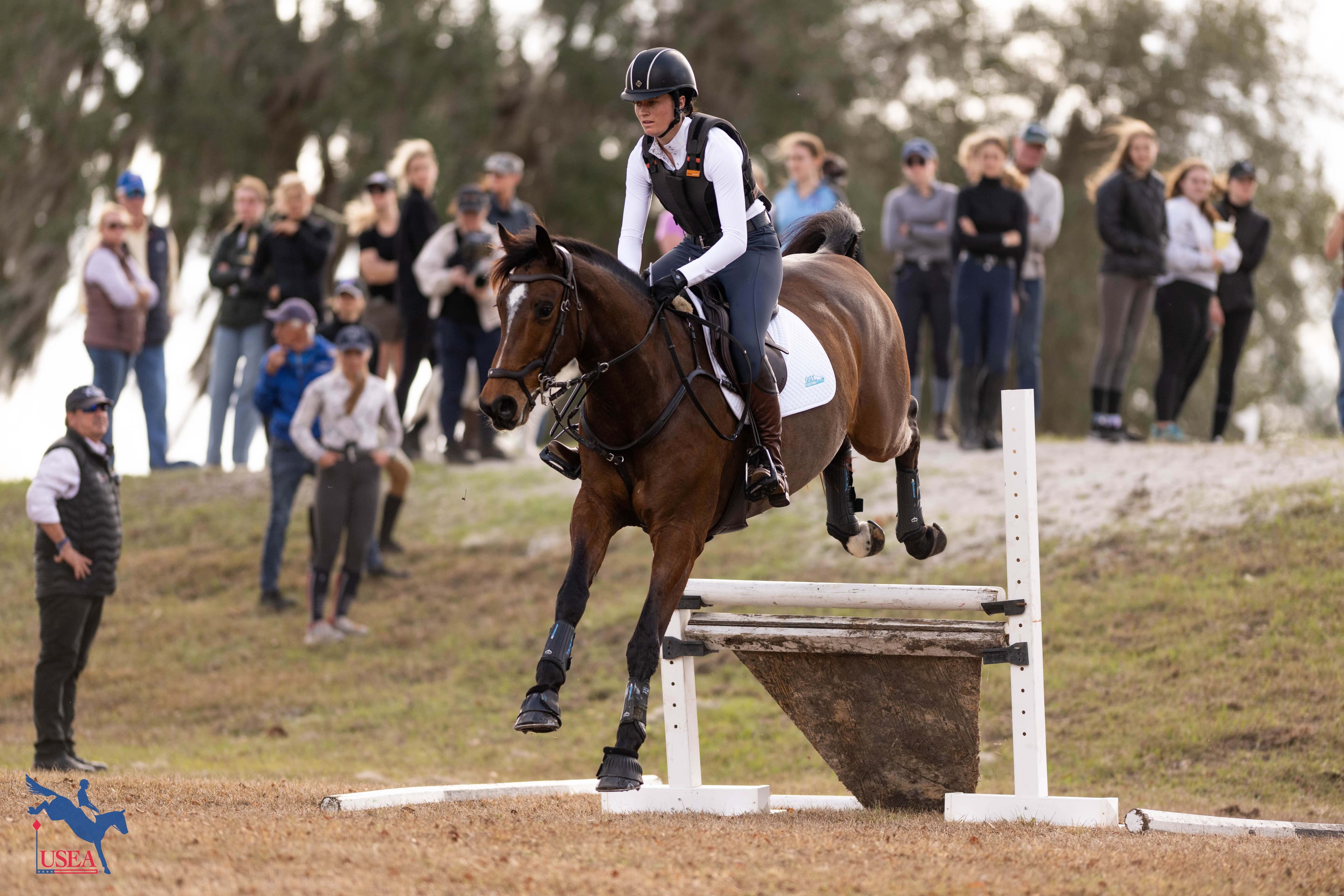Get Licensed: Becoming A Cross-Country Course Designer
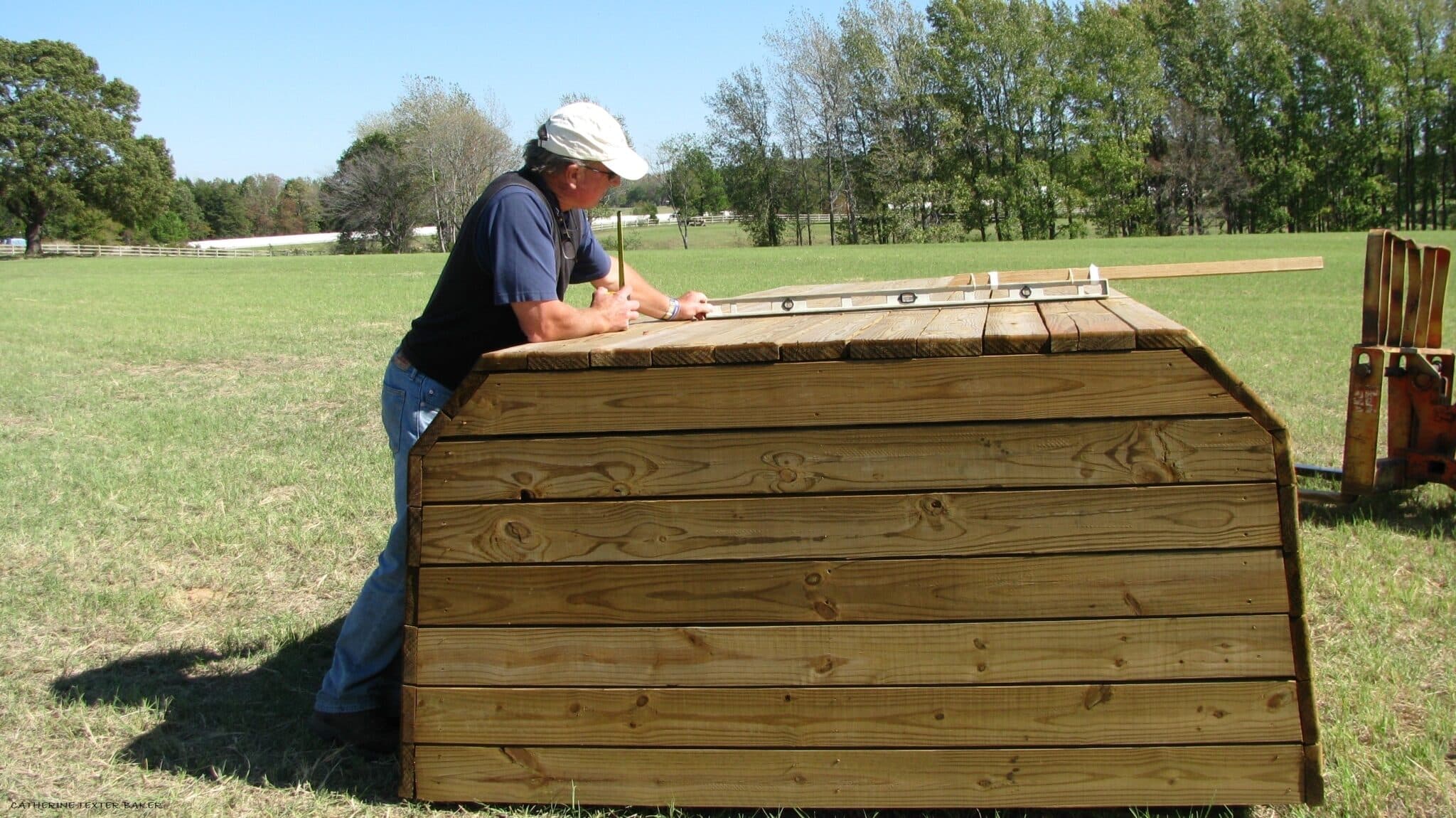
Most eventers recognize a licensed official as their judge, technical delegate or cross-country course designer, but many haven’t considered how these officials found themselves in those roles. The path to becoming licensed is often long, undulating and expensive, and yet these individuals do it to keep the sport alive for years to come. In this series, we explore what exactly it takes to become a licensed official. First up, cross-country course designer.
Longtime eventing competitor Beth Perkins, of Rutherfordton, N.C., decided last year to take steps to become a “r” licensed cross-country course designer. Perkins has competed through the four-star level, representing the United States at the 1974 World Championships and 1975 Pan American Games. Her brother-in-law Derek di Grazia, who is married to Beth’s sister Bea, who is also an event rider, designs courses for major events including Fair Hill International and the Rolex Kentucky Three-Day Event, and he will design the courses for the 2020 Olympic Games in Tokyo.
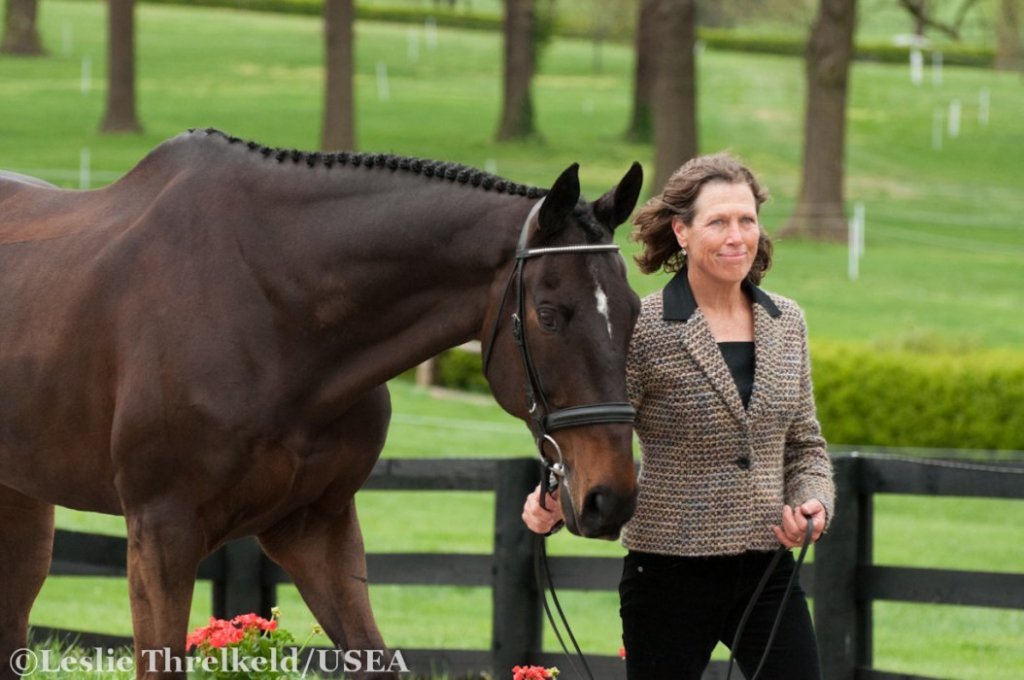
Beth Perkins at the first horse inspection at the Rolex Kentucky Three-Day Event. USEA/Leslie Threlkeld Photo.
After signing up for the program, Beth attended a USEA Training Program for Licensed Officials (TPEO) at the Virginia Horse Trials, where John Williams was the FEI designer and Morgan Rowsell was the instructor. “A lot of people who go to that one are organizers that design their own courses up to prelim level, and they have to get certified but they don’t actually have a license,” she explained. “It’s a general program about how to design courses; designers need to recognize how to have a progression from novice to training to prelim so horses and riders are ready.”
The TPEO program costs $350, and once you’re certified, the next step is to apprentice with two upper level designers for a minimum of 8 hours each. Beth apprenticed with Derek diGrazia at Fair Hill International and also with Captain Mark Phillips at the Tryon International Equestrian Center (TIEC).
Candidates also have to work as an assistant designer at a recognized event at the preliminary level, and design a training level course under the advice of a licensed designer at. Perkins designed novice through training level courses at four unrecognized “War Horse Series” events at the Carolina Horse Park in Raeford, N.C. and an unrecognized event at Portofino Stables near Raleigh, NC.
“It was a good hands-on experience,” she said. “I was figuring out the times and distances and how many jumping efforts to fit into the length of each track. For example, in beginner novice you’re allowed to use 14 jumping efforts over a distance of 1400-2000 meters.”
Once an individual gets started on the course designer track, it is best to get the requirements met as efficiently as possible. “It can take over a year to get all that experience. The more you do it, the better you get at it; if you take too much time away, you get rusty. It’s really best to keep your hand in designing because a lot of times trends change, whether it’s brighter fences or rounder fences. It’s not just that you want to stay current but that you get better at it, the more you do. The hands-on experience is really helpful.” She also noted that with the busy life of rider/coach, it’s easy to get started, get back into your normal routine, and not move on in the process. “Probably the biggest complaint most officials have is the amount of time you have to spend away from home.”
Besides being at least 21 years of age, being a Senior active member in good standing with the USEF and accumulating the design experience, you also have to have riding experience. The USEF recognizes riding and design experience through a point system which requires six points to be earned from verifiable riding experience and four points earned from design experience, for a total of 10 points.
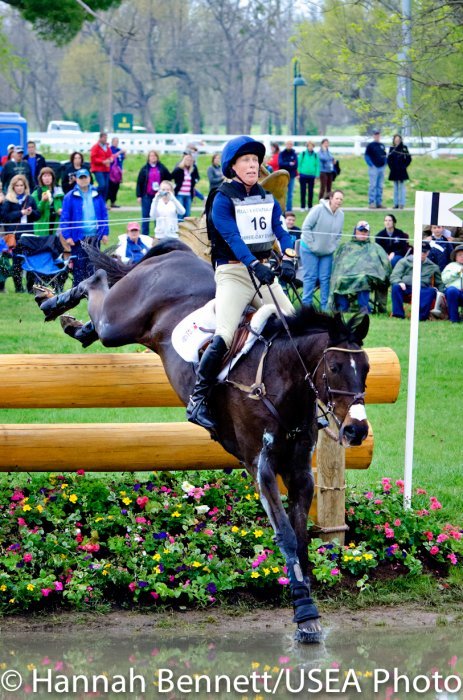
Beth Perkins competing at the 2013 Rolex Kentucky Three-Day Event. USEA/Hannah Bennett Photo.
Points toward your riding experience are recorded if you achieved a qualifying score and the number of points you earn increases with the level you successful competed through. For example, a CCI3* qualifying result is worth five points, and a Preliminary qualifying result is worth two points. For someone like Perkins, satisfying the riding experience portion of her licensing is easy, but she acknowledged that it would be difficult, yet not impossible, for someone who does not compete at the highest levels.
Perkins took the test to earn her USEF “r” license in Woodside, California, which included a written test as well has hands-on sections. “There are a lot of the nuances of course design that you have to know, and there are a multitude of details. Mike Etherington-Smith wrote a big book on design which is educational. You’re expected to study for the test and be pretty well educated on the language of the USEF rules and the USEA guidelines,” she added.
In preparation for the test she spent time at course builder Greg Schlappi’s workshop in Landrum, S.C. and learned about frangible pins and the MIM system. “They want you to learn about building because you need to be able to work with the course builder,” she said. “At Woodside, working with the pre-existing preliminary track, we had to draw five or six sketches of combinations that were on the course: some coffins, bending lines and water, and they wanted us to draw exactly what we’d draw to give a course builder, with all of the details perfectly clear.”
At the testing site, Perkins explained that the group was asked to evaluate the site and existing course. “At events, the course designer is the first person on-site and can see early on where there might be some issues. You’re supposed to take note of the layout from a safety point of view; can a horse ambulance get to all the jumps” Where is control located? Then we were asked to design a show jumping course in the Woodside Arena as well.”
There were several examiners at the licensing. “I started with Ian Stark and went around with my sketches and flags and showed him how I’d redesign the combinations. Marilyn Payne talked to groups of three of us about things that could happen at an event where the designer could be called into question, like a dangerous fence, bad footing. Gretchen Butts gave us possible scenarios of fences having to be pulled off the course and we talked about how we’d change the course if a jump had to be removed,” Perkins continued.
“They want you to be flexible and find solutions so you can work with the ground jury and TD. Gretchen would ask specific questions and after you answered, she asked if you were sure, to see if you stood your ground. She was tough. You had to know what the heck you were doing! Derek talked to us, after we watched horses go around the course, about what we liked and what we’d change.”
Things wrapped up with another written test, with the examiners in attendance. Participants could use the rulebook as a resource, but were encouraged to answer the questions on their own as much as possible. At the end of the day, participants met privately with the examiners to find out whether they passed, and received written critiques as well.
“They told us our strengths and weaknesses. There’s a big focus on education. And they’re pretty tough. As my sister said, you’re going from a competitor to an official; you’re part of this different group. This has given me huge respect for what these people have to go through to get their license and all of the aspects that go into being an official,” Perkins remarked.
“A lot of people have farms and families and other jobs as well, because being an official doesn’t pay the mortgage, and they spend a lot of time away from home because they want to stay involved with the sport. That’s sort of why I decided to do it. I’m still riding and coaching, but there may come a time when I’m not doing that, and this is a way to stay involved. Also, I really enjoy course design; it’s quite challenging and there’s a certain creative aspect to it.”
Once an applicant has passed the test, they have to get the final “okay” from the USEF. Perkins explained that the application included information about her background and her history with horses. Finally, after the exam there is no time for procrastinating: 15 licensed officials have to write letters of recommendation for each candidate, and these must be submitted a week ahead of the USEF Annual Meeting, when the Licensed Officials Committee meets.
Once a participant has completed their final examination and the USEF has received all recommendations, the candidate will be put on the agenda of the USEF Licensed Officials Committee (LOC) to review. The LOC makes a final decision based on the applicant’s exam, experience and recommendations. Even once a license from the USEF is achieved, Perkins emphasizes that officials must continue to participate in Continuing Education Clinics (CEC). At least one clinic must be attended every three years.
Perkins has been asked to design the training level course at the Carolina International Three-Day Event and Horse Trials at the Carolina Horse Park, which includes courses up to the CIC3* level with Ian Stark. She plans to meet with him before the event to discuss the tracks for his courses and how her course will fit with them. She also continues to work with Mark Phillips when he comes to TIEC, which is local for her, as he is designing the courses for The Fork Three-Day Event in its first year at the new venue.
“You always learn something – these guys have been doing it for 30 or 40 years and while I think I have a good feel, from riding for so many years, it’s really good to get their perspective from a technical point of view,” she concluded.
The Course Designer (CD) is responsible for the layout, measurement, preparation, and demarcation of the route for the cross-country or show jump portion of Horse Trials and Events.”Generally, a course designer works with a course builder to create the courses that define our sport.
Eventing officials including judges, technical delegates (TD), course designers (CD), and jumping course designers are licensed by the USEF at the recorded (r), Registered (R), Senior (S) and FEI levels. The USEA sponsored Training Sessions, followed by a final exam, are required for the “r”, “R” and “S” licenses. The United States Equestrian Federation is responsible for licensing all eventing officials.
Individuals wishing to be an eventing “r” official should review the material outlined in the USEF Rule Book (GR140). In addition, they must meet the minimum criteria outlined to be accepted into the “r” Training Program for eventing Officials (TPEO), and subsequently pass the final exam in order to be considered for licensing by the USEF.
In addition to individuals seriously pursuing licensure through USEF, the “r” TPEO is also open to USEA members who are interested in learning more about eventing, but are not interested in pursuing a license as an official. Training session space is limited, however, with preference given to individuals working on their “r” license.
USEF Requirements for “r” Eventing Course Designer


